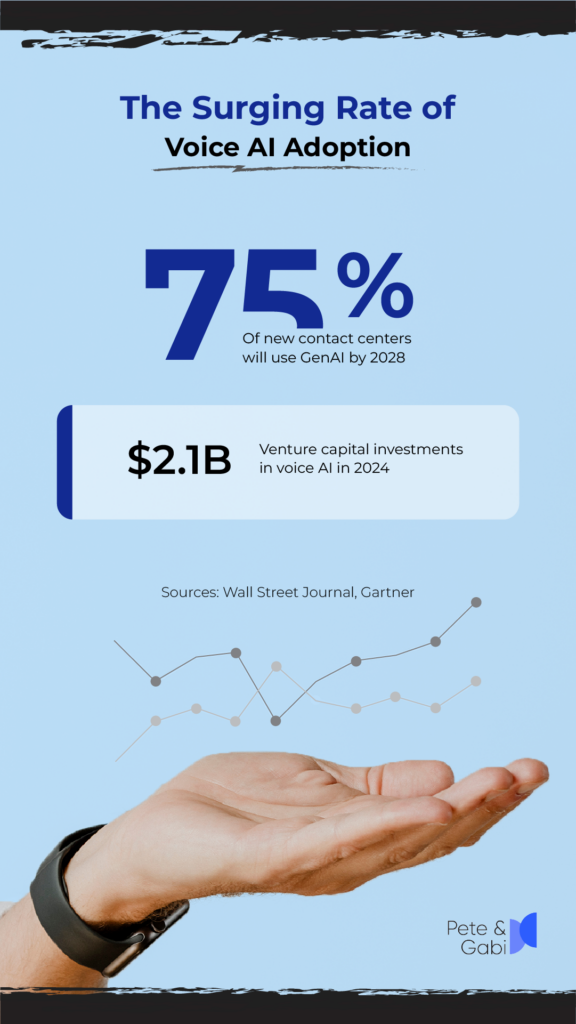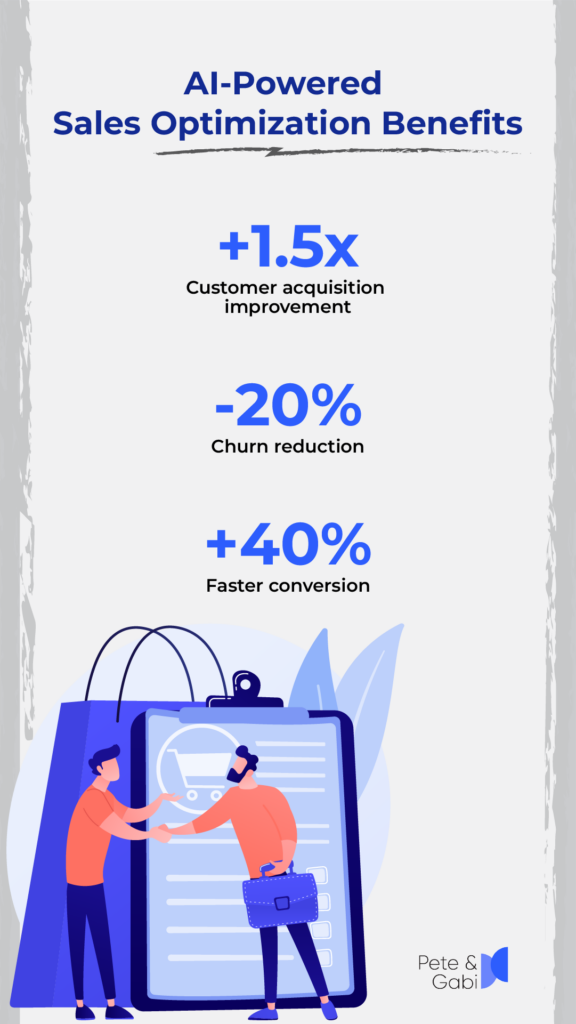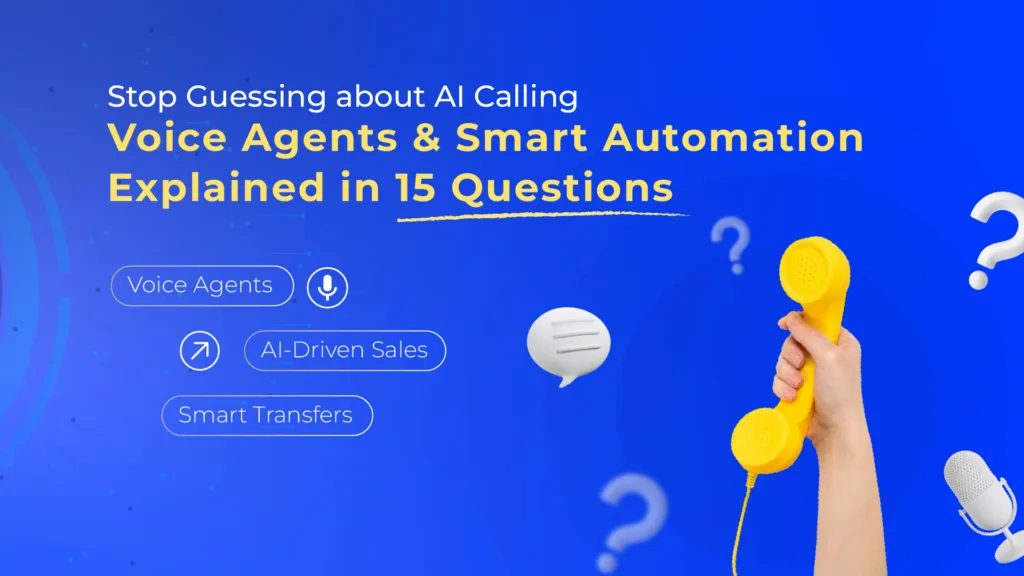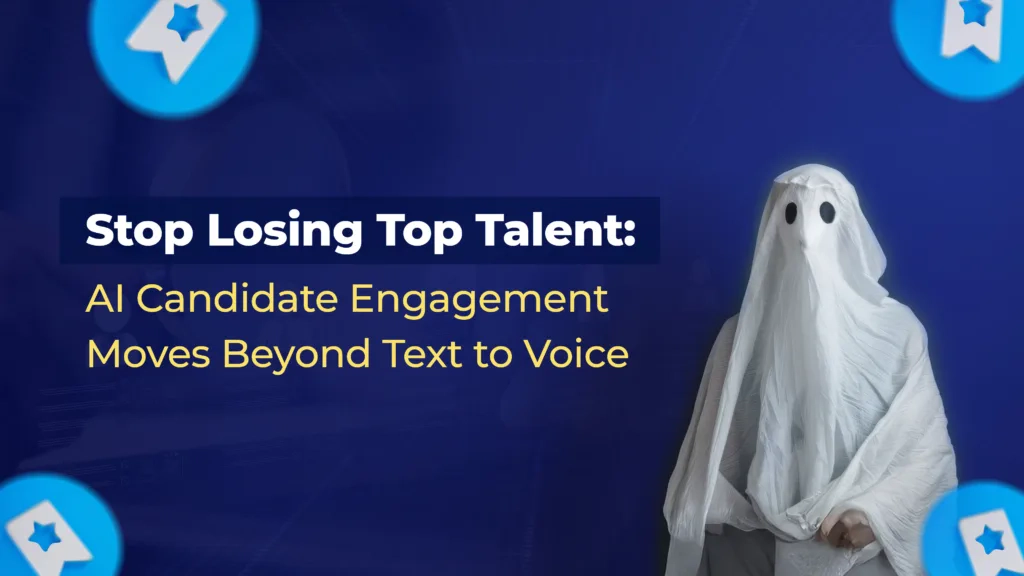Summary:
Voice AI in sales is here to stay. With its capacity for having human-like, effective conversations with both existing customers and prospects, it’s already transformed the sales landscape. And with improvements to speech recognition and sentiment analysis, these systems are better than ever at reading intent, having personalized dialog, and adapting conversations on-the-fly. They naturally convert conversations into revenue. And by integrating seamlessly into CRMs and sales workflows, voice AI automates prospecting, lead qualification, upselling and cross-selling with reduced churn.
Introduction:
Did you know the vast majority of sales (80% per recent stats from Invesp CRO) require five or more contacts from reps?
That’s a lot of calling. Reaching out. Checking-in. Updating.
Yet, in the real world, nearly half (48%) of salespeople never follow up, and 44% give up after a single try.
We all know that in sales, quality relationships are critical.
But it’s only part of the equation. There’s also effective listening, impeccable product knowledge, providing quality service, and the ability to understand when to offer personalized and relevant offers.
AI systems are already giving companies most of these benefits right now.
Using voice AI for sales calls completely changes the game. With the automation able to handle arduous tasks like follow ups, your team is freed to focus on things that matter most—talking to high value leads and maximizing the revenue value of existing clients.
Sound too good to be true?
In today’s blog we look at the reality, covering how voice AI actually works for sales calling, the process behind lead qualification, and what all this can mean for your bottom line.
A Closer Look: How Voice AI Optimizes the Sales Process
First and foremost, Voice AI systems bring the efficiency boosts that sales teams need.
With their capacity to dial at the times, and in the ways, you need, no sale need ever be lost for a lack of time.
AI sales agents provide:
- Automated Prospecting: These AI systems make hundreds of outreach calls simultaneously. They qualify leads starting from dynamic scripts, answer questions, and can even book meetings without any human involvement at all.
- Automated Lead Qualification: AI doesn’t wait for your reps to work through endless, tiresome lists. It dials directly, engages, asks discovery questions in real-time, gauges buyer readiness, and scores appropriately. Or if they’re ready now or need more information, the best systems warm transfer calls right to your sales team for closing.
- Baked in Upsell and Cross-Sells: Premium Voice AI systems can identify buying signals or conversation trends and suggest relevant add-ons or upgrades in real time, ensuring consistent and effective upsell and cross-sell execution occurs across calls.
- Win Back and Promotional Calling: With these AI systems, companies can automate their customer win-back and promotional campaigns, personalizing offers based on past interactions and purchase history. This often drives higher engagement rates than email or messaging with effective, human-like conversation.
What does this all add up to?
Reduced call handling times, exponential drops in cost per call, increased customer satisfaction, and increased sales.
Why Voice AI Is Rising Fast in Popularity
The benefits to businesses bottom-lines are obvious, and that hasn’t been lost on the market.
The Wall Street Journal reports that voice AI surged as a hotspot for venture capitalists between 2023 ($315 million) and 2024 ($2.1 billion), and that investment is already paying big dividends.
With more leading companies adopting voice AI systems first, front-runners are pushing even further ahead while companies that lag find the gap only increasing.

Voice AI vs Conversational AI for Sales—So What’s the Difference?
Whether you’re an AI optimist or doomer, an avid enterprise user or an occasional chatbot dabbler, people love talking to AI.
[We’ve covered this before—you can see just how much in this article on how conversational AI works.]
That’s because it’s easy, adaptive, and increasingly life-like.
And as we talk about the varying systems, there’s a difference between conversational AI and voice AI (though they’re sometimes used interchangeably).
Conversational AI refers to AI’s ability to understand and respond to us. Whether that means text, voice, images, or video.
Voice AI is more specific. It refers to conversational systems that actually listen to us and can carry on vocal conversations.
Conversational AI: The Importance of Sentiment and Call Intelligence
Conversational AI can handle most calling needs, detect intent, mood, make conversation more natural, and know when a call needs to be transferred to a human agent.
And for sales use, it boasts additional features like sentiment analysis, call scoring, and the ability to get better by experience, using machine learning (ML) for fine-tuning.
Systems that can transfer leads directly to sales pros give you the best of both worlds: an AI contact that’s on-time and on-message, and an experienced human closer to seal the deal.
Let’s look at these pieces:
- Sentiment Analysis: evaluates tone, pace, and stress in a voice. It detects emotions like frustration, interest, or confusion. Upon detection of these, it can switch gears on the fly: switching to a calming approach when irritation is detected or picking up the pace when someone’s getting impatient.
- Call Scoring: automatically listens to live calls for key metrics, like keywords, objections, and even legal compliance. This ability delivers consistent, real-time scoring that can be used to improve coaching, track performance, and boost sales outcomes.
- Machine Learning for Fine-Tuning: everybody gets better with practice. AI systems, too, improve over time, and far faster than we do. Fine-tuning refines calling for sales teams based on actual experiences.
- Live and Warm Call Transfer: immediately shifts calls to humans on need, whether it’s for closing the deal or adding a human touch.
Seamless AI CRM Integration for Sales Calling Solutions
AI voice agents don’t just optimize sales calls.
They also make your team more efficient. Using AI calling assistants means less time spent on manual calling and data entry – freeing your salespeople to focus on what they are best at: selling.
By integrating seamlessly with your existing tools, AI phone agents automatically log call data, transcriptions, sentiment evaluations, and the next required step into CRMs like Salesforce, Hubspot, Zoho, or even custom-built systems.
They can also use other tools like calendars for scheduling, bringing automation throughout the lead-to-close process.
This slashes the manual work, further empowering your team to focus on complex interactions and establishing quality relationships.
AI-Powered Sales Calls Aren’t the Future—They’re Now the Baseline for Top Sales Teams
With all of this humming together smoothly, voice AI solutions help sales teams not only reach customers, but also accelerate their pace and results.
They empower a single rep to work like a team, with their own AI assistants helping them get the job done.
Check out some of the benefits companies are getting now from voice AI sales solutions:

By increasing sales call conversion rates while dropping costs, even small and medium-sized businesses are opening the door to ready scaling and seeing real ROI upon implementation.
Pete & Gabi: AI Sales Call Optimization Made Easy
Okay, so there’s one voice AI system that brings all this to the table and does it easily: Pete & Gabi.
Consider what it does best:
- Easy Implementation: You don’t need technical expertise to start profiting from voice AI. We’ve helped companies sign up on a Monday and be up and running by Friday.
- Mature and Battle-Tested: Fine-tuned and refined over four years, on thousands of calls across industries, Pete & Gabi is already a proven game-changer. We know the struggles businesses face and built the system to order. And with hundreds of development hours invested and more than a million lines of code, it’s ready to go to work for you.
- Train Once and Scale on Need: Pete & Gabi doesn’t need continuous coaching, and it’s also easy to monitor.
- Proven Metrics: We’re helping companies win right now with customer acquisition and win back, radically boosted conversion, cross-selling and up-selling.
Conclusion: Let AI Sales Call Assistants Optimize Your Team
Voice AI is here and it’s not going away. For sales teams that are out of time to make contacts or follow up, lack the right information, or fail to effectively track efforts, AI solutions can save the day.
AI phone agents take on repetitive work, and they do it effectively, tirelessly, and cost-efficiently.
Sound too good to be true?
Take a look for yourself. Talk to Gabi right now at +1 224 445 2200
FAQs
Can voice AI sales systems replace human sales reps entirely?
Nope. In sales, building quality relationships is critical, and AI systems can’t compete with that.
But where voice AI has changed the game is with consistency, scaling, follow ups, outreach, scheduling, perfect record-keeping, and outstanding product knowledge. These systems are bolstering sales and reducing churn because they do what human beings simply can’t—make all the contacts you need, when you need, and with the quality you crave.
How do voice AI systems integrate with existing sales tools like CRMs?
Seamlessly. Or they should.
Current voice AI platforms offer integrations with leading CRMs like Salesforce, HubSpot, and Zoho. They automatically log call data, transcriptions, sentiment, and next-step recommendations, further reducing the need for manual entry.
Are voice AI systems customizable for our specific industry or customer base?
Yes.
Quality systems are perfected by making thousands of calls, and can be trained on your specific product, brand, and even compliance needs.
You can customize scripts, responses, and transfer scenarios to ensure the system fits your needs. Some platforms support multiple languages, and with 24/7 availability and voice customization they’re perfect for global reach.









